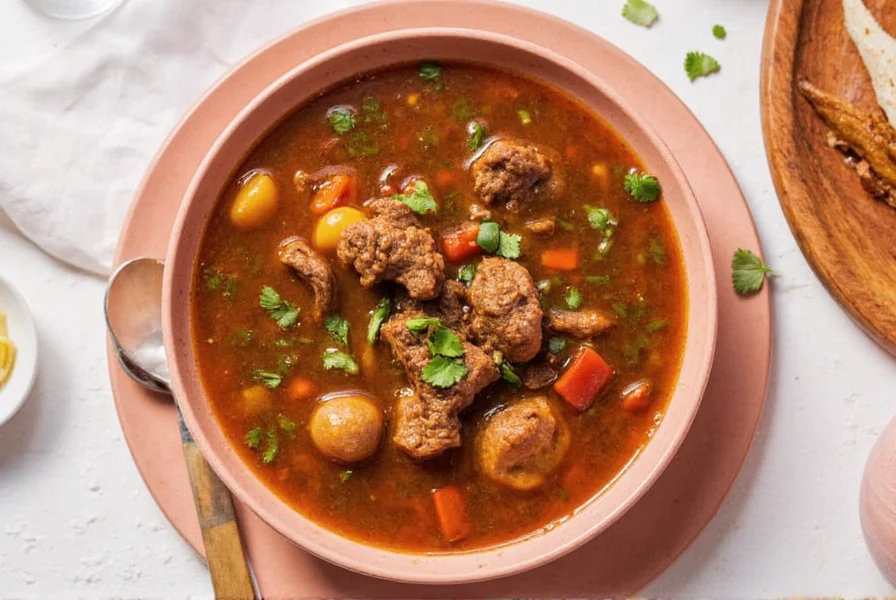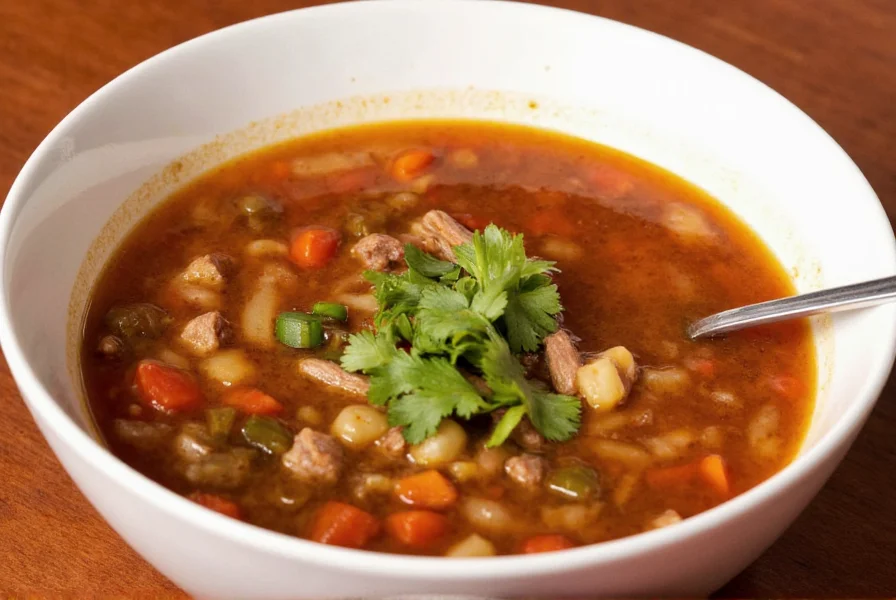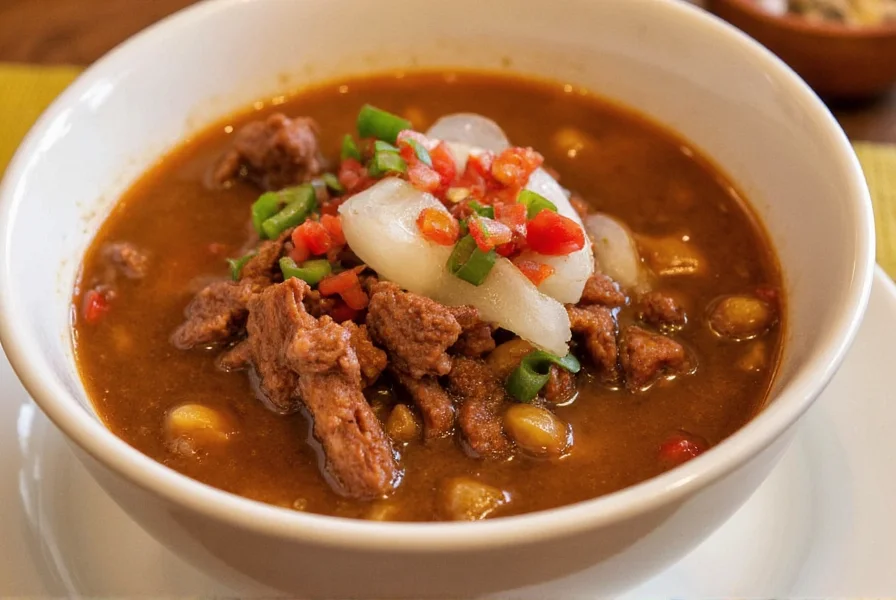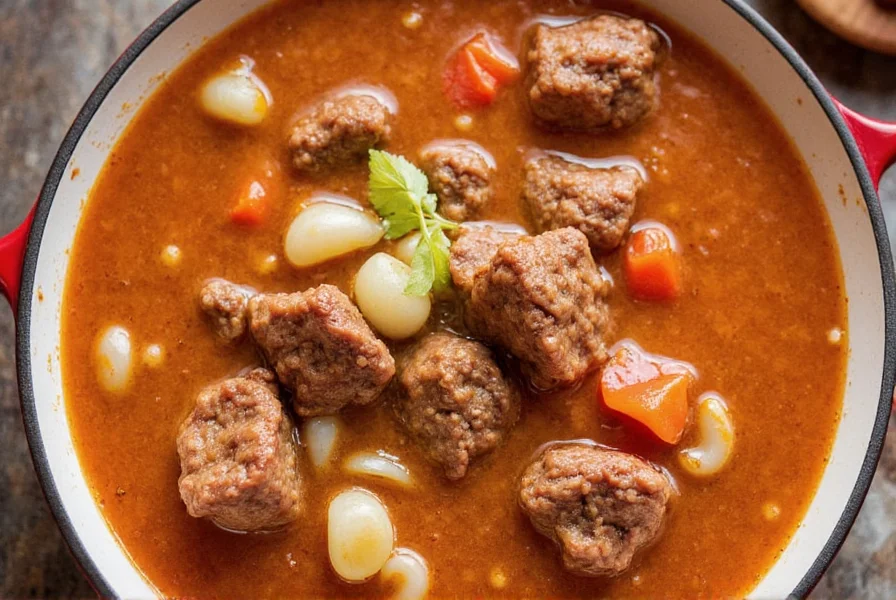Carne para caldo is a Spanish term meaning "meat for broth," referring to specific beef cuts (like shank or chuck) that are ideal for making rich, flavorful soups and broths. This guide covers everything you need to know about selecting, preparing, and cooking carne para caldo for perfect results every time.
Whether you're making traditional Mexican caldo de res, Vietnamese pho, or a hearty beef stew, understanding this versatile cut will transform your broth game. Let's dive into the details.
Table of Contents
- What Is Carne Para Caldo?
- Spice It Up: Best Flavors to Pair with Carne Para Caldo
- Top 5 Cooking Tips for Juicy, Flavorful Results
- Buying Guide: How to Choose the Best Carne Para Caldo
- Recipe Ideas That'll Make You Forget Takeout
- Storage & Leftover Hacks You Need to Know
- Frequently Asked Questions About Carne Para Caldo
- Conclusion
What Is Carne Para Caldo?
Carne para caldo translates literally to "meat for broth." It typically refers to cuts from the shank or chuck area of the cow — tough but highly flavorful pieces that become tender when cooked low and slow. These cuts contain connective tissue and collagen, which break down during cooking, enriching the broth with body and depth.
| Cut | Texture | Best For |
|---|---|---|
| Beef Shank | Tough, sinewy | Long-simmered soups, stews |
| Chuck Roast | Firm with marbling | Broths, braises, pot roasts |
| Oxtail | Very rich, gelatinous | Stocks, Jamaican-style soups |

Spice It Up: Best Flavors to Pair with Carne Para Caldo
Now, here's where things get fun! Carne para caldo may be hearty and rich, but it needs the right companions to really shine. Whether you're aiming for earthy warmth or fiery punch, the following spices are your go-to allies:
- Cumin: Adds smoky, nutty depth — a must-have in Latin broths.
- Garlic: Infuse oil or add whole cloves for bold, aromatic richness.
- Chili Powder (Ancho or Guajillo): Offers mild to moderate heat with complex sweetness.
- Paprika: Brings color and subtle smoke without overwhelming the dish.
- Bay Leaves: Enhance the overall aroma and round out the savory notes.
- Black Peppercorns: A few whole peppercorns in the pot add sharpness and warmth.
Pro Tip: Toast your spices lightly before adding them to the broth to unlock their full potential!
Top 5 Cooking Tips for Juicy, Flavorful Results
Cooking carne para caldo isn't rocket science, but there are definitely ways to take it from basic to brilliant. Here are five tips that'll guarantee delicious results every time:
- Brown It First: Sear the meat in a hot pan to develop a rich crust. This builds deep flavor via the Maillard reaction.
- Skim the Scum: When the broth starts boiling, foam will rise to the top. Skim it off gently to keep your soup clear and clean-tasting.
- Add Acid Toward the End: A splash of lime juice or vinegar enhances flavors and helps draw minerals out of bones if using oxtail or marrow bones.
- Don't Rush the Simmer: Low and slow is key. Aim for at least 1.5–2 hours of gentle simmering.
- Rest Before Cutting: If serving as slices, let the meat rest for 10 minutes so juices redistribute evenly.

Buying Guide: How to Choose the Best Carne Para Caldo
Choosing the right cut can make or break your soup experience. Here's what to look for when shopping for carne para caldo:
Types of Cuts
- Shank Cross-Cuts: Circular cuts with bone in center; ideal for making rich broths.
- Chuck Cubes: Marbled and flavorful; great for soups and stews.
- Flanken Ribs: Often used in Korean-style soups; meaty with lots of marrow.
Features to Look For
- Fresh Appearance: Meat should be bright red, not brown or gray.
- Moderate Marbling: Fat adds flavor; avoid overly fatty or dry cuts.
- Even Thickness: Ensures uniform cooking and extraction of flavors.
| Cut Type | Price Range | Flavor Intensity | Cook Time | Recommended Use |
|---|---|---|---|---|
| Shank Cross-Cut | $3–$5/lb | High | 2+ hours | Caldo de Res, Pho bases |
| Chuck Cubes | $4–$6/lb | Medium-High | 1.5–2 hours | Stews, rice dishes |
| Flanken Ribs | $6–$8/lb | Very High | 3–4 hours | Korean soups, ramen broths |

Recipe Ideas That'll Make You Forget Takeout
Ready to get creative? Here are detailed recipes that showcase carne para caldo at its finest:
1. Classic Caldo de Res
Ingredients:
- 2 lbs carne para caldo (shank or chuck)
- 8 cups water or beef broth
- 2 carrots, chopped
- 2 celery stalks, chopped
- 1 onion, diced
- 3 garlic cloves, minced
- 1 bay leaf
- 1 tsp cumin
- 1 tsp oregano
- Salt and pepper to taste
- Fresh cilantro for garnish
- Lime wedges for serving
Instructions:
1. Rinse meat and place in a large pot with water. Bring to a boil, then reduce to a simmer.
2. Skim off any foam that rises to the top.
3. Add carrots, celery, onion, garlic, bay leaf, cumin, oregano, salt, and pepper.
4. Simmer covered for 1.5-2 hours until meat is fork-tender.
5. Remove meat, slice into thin pieces, and return to the pot.
6. Serve hot with cilantro and lime wedges.
2. Slow-Cooked Beef Broth Ramen Base
Ingredients:
- 2 lbs beef shank (carne para caldo)
- 10 cups water
- 1 onion, quartered
- 3 garlic cloves, smashed
- 1-inch ginger, sliced
- 2 tbsp soy sauce
- 1 tbsp miso paste
- 1 tsp sesame oil
- 2 dried shiitake mushrooms
Instructions:
1. Place shank in a pot with water, onion, garlic, ginger, and mushrooms. Bring to a boil, then reduce to a simmer.
2. Skim foam and simmer uncovered for 3 hours.
3. Strain broth, discard solids. Stir in soy sauce, miso paste, and sesame oil.
4. Use as base for ramen with noodles, soft-boiled egg, and bok choy.
3. Carne para Caldo Curry Stew
Ingredients:
- 2 lbs chuck roast (carne para caldo)
- 2 tbsp curry powder
- 1 can (14 oz) coconut milk
- 2 sweet potatoes, cubed
- 1 red bell pepper, sliced
- 1 onion, diced
- 3 garlic cloves, minced
- 1 tbsp tomato paste
- Salt to taste
Instructions:
1. Sear meat in a pot until browned. Remove and set aside.
2. Sauté onion, garlic, and bell pepper until soft. Add curry powder and tomato paste.
3. Return meat to pot. Add sweet potatoes, coconut milk, and 2 cups water.
4. Simmer covered for 1.5 hours until meat is tender. Season with salt.
Storage & Leftover Hacks You Need to Know
Don't toss those leftovers — they're gold in disguise! Here's how to store and repurpose your carne para caldo like a pro:
- Refrigerate: Store meat and broth separately in airtight containers for up to 4 days.
- Freeze: Freeze portions in ziplock bags or vacuum-sealed containers for up to 3 months.
- Repurpose: Shred leftover beef for tacos, enchiladas, or stir-fries.
- Clarify Broth: Strain through cheesecloth or coffee filters to remove impurities for a cleaner taste.
- Infuse Oils: Simmer scraps in olive oil to create a beef-infused oil for pasta or drizzling over meats.
Frequently Asked Questions About Carne Para Caldo
- What exactly is carne para caldo and how is it different from regular stew meat?
- Carne para caldo specifically refers to cuts of beef optimized for making broth, typically from the shank or chuck area. While similar to stew meat, it often contains more connective tissue and bone that breaks down during long cooking to create a richer, more gelatinous broth. Regular stew meat might be cut from the same areas but is typically selected more for the meat itself rather than its broth-building properties.
- Where can I find carne para caldo if my local supermarket doesn't carry it?
- Many Latin American or Hispanic markets will specifically label this cut as "carne para caldo." If unavailable, ask your butcher for shank cross-cuts, chuck roast, or oxtail—these are the most common cuts used. Some grocery stores might list it under "soup bones" or "broth meat." Don't hesitate to explain you're looking for meat specifically for making rich broths, and the butcher can guide you to the right cut.
- How long should I simmer carne para caldo for the best results?
- For optimal flavor extraction and tenderness, simmer carne para caldo for 1.5-2 hours for chuck cuts, and 2-3 hours for shank or oxtail. The meat should be fork-tender but not falling apart completely. Remember that low, gentle simmering (not boiling) is crucial—vigorous boiling can make the meat tough and create cloudy broth.
- Can I use carne para caldo in non-Latin dishes?
- Absolutely! While traditionally used in Latin American soups, carne para caldo works wonderfully in any dish requiring a rich beef broth. Try it in French onion soup, Vietnamese pho, Korean seolleongtang, or even as a base for beef stew. The collagen-rich cuts create a luxurious mouthfeel that enhances virtually any broth-based dish regardless of cuisine.
- Do I need to remove the meat before storing the broth?
- For best results, separate the meat from the broth before storing. The meat continues to cook in the hot liquid, which can lead to overcooked, dry meat when reheated. Store them separately: broth in one container, meat in another. This gives you flexibility to use the broth for sauces or soups without meat, and the meat for tacos or sandwiches.
- What's the best way to prepare carne para caldo before cooking?
- Pat the meat dry with paper towels before searing—it helps create a better crust. For bone-in cuts, briefly blanch in boiling water for 2-3 minutes to remove surface impurities, then rinse before searing. Never skip the searing step; it creates complex flavor compounds through the Maillard reaction that boiling alone cannot achieve.
- Can I substitute other cuts if I can't find carne para caldo?
- Yes! Look for cuts with connective tissue and bones: beef shank, chuck roast, short ribs, or oxtail all work well. Avoid lean cuts like sirloin or tenderloin, which lack the collagen needed for rich broth. If using pre-cut stew meat, check that it has visible marbling and isn't too lean. For the best substitute, ask your butcher for "soup bones" or "bone-in chuck."
Conclusion
Carne para caldo is more than just a cut of meat — it's a gateway to bold, beautiful flavor. Whether you're simmering a classic soup, experimenting with global cuisines, or building a custom broth base, this versatile ingredient deserves a spot in your kitchen.
So next time you see that label at the butcher counter, don't pass it by. Grab it, season it well, cook it slow, and let the magic happen. Because with the right spices and a little patience, you're not just making soup — you're crafting comfort in a bowl.
Stay spicy, friends!











 浙公网安备
33010002000092号
浙公网安备
33010002000092号 浙B2-20120091-4
浙B2-20120091-4